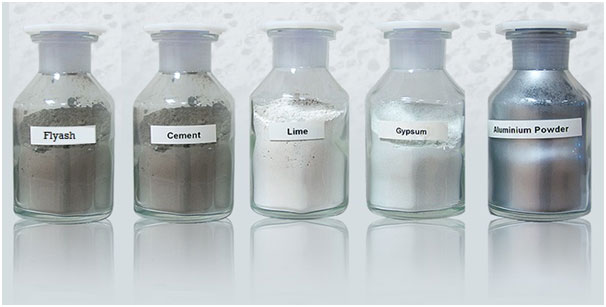
Raw Materials Processing System
AAC system is depend on varieties of raw materials.
The main systems used in the area of raw materials processing include:
- Fly ash feeding with dosing devices
- Ball mills for wet grinding
- Sludge tanks with agitators
- Silos for solids
- Aluminium plants
A variety of raw materials can be used for AAC production. It is usually finely ground, silicate-rich quartz sand, quicklime, cement and anhydrite or gypsum (as binders), as well as aluminium paste or powder (as foaming agent) and water. Fly ash is a popular alternative to sand. In the storage silos, the solids (quicklime, cement and anhydrite (gypsum)) are intermittently stored. The silos are equipped with discharge devices that ensure an even and controlled emptying of the silo.In the aluminium plant, the aluminium paste is dosed either batch-wise or daily quantity-wise before it is mixed with water and fed to the mixer. All the system components used are equipped with filling level monitors.
